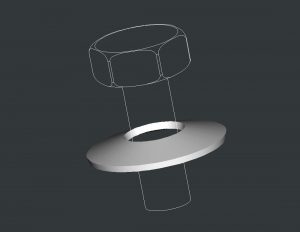
Also known as a disc spring or cupped spring washer, a Belleville washer is a unique washer-style fastener that’s characterized by a cupped construction. As shown in the image here, Belleville washers don’t lie flat. Rather, they feature a canonical shape in which the inner portion is higher than the lower portion.
Belleville washers are used just like conventional washers by featuring a center hole through which a fastener, such as a bolt, is placed. But their unique canonical shape makes them particularly effective at handling heavy loads while also offering benefits.
Origins of the Belleville Washer
It’s unknown who invented the Belleville washer or when they did it. With that said, washers with this same canonical shape have been around for over a century.
It’s a common assumption that the Belleville washer was invented by Julien Belleville, but this isn’t necessarily true. The Belleville washer is, in fact, named after Julien Belleville, but he didn’t necessarily this canonical-shaped washer. Julien Belleville filed a patent for a cupped, spring washer during the 1860s in France. However, canonical-shaped washers had been around for several decades prior to his patent. Regardless of its origins, Belleville washers have since become a popular choice for high-stress applications requiring the use of a washer.
How Belleville Washers Work
The purpose of a Belleville washer is to absorb loads by acting as a spring. When a load is applied a Belleville washer, the washer compresses. At the same time, the Belleville washer exerts an equal amount of force against the object. This means Belleville washers can handle larger, heavier loads that aren’t possible with conventional washers.
Depending on the application, multiple Belleville washers can be used to create greater resistance against heavy loads. Rather than using a single Belleville washer, you can use two or three Belleville washers. The stack of Belleville washers creates multiple springs, each of which acts against the object.
In addition to handling heavy loads, Belleville washers are able to absorb vibrations. Many vehicles, for example, use Belleville washers for this reason. Vibrations can often knock conventional washers loose, but this isn’t a problem with Belleville washers because of their canonical shape. Even under constant vibrations, a Belleville washer shouldn’t come loose.
Belleville washers are suitable for all applications. But their canonical shape and spring-like characteristics make them ideal for handling heavy loads and absorbing vibrations.
